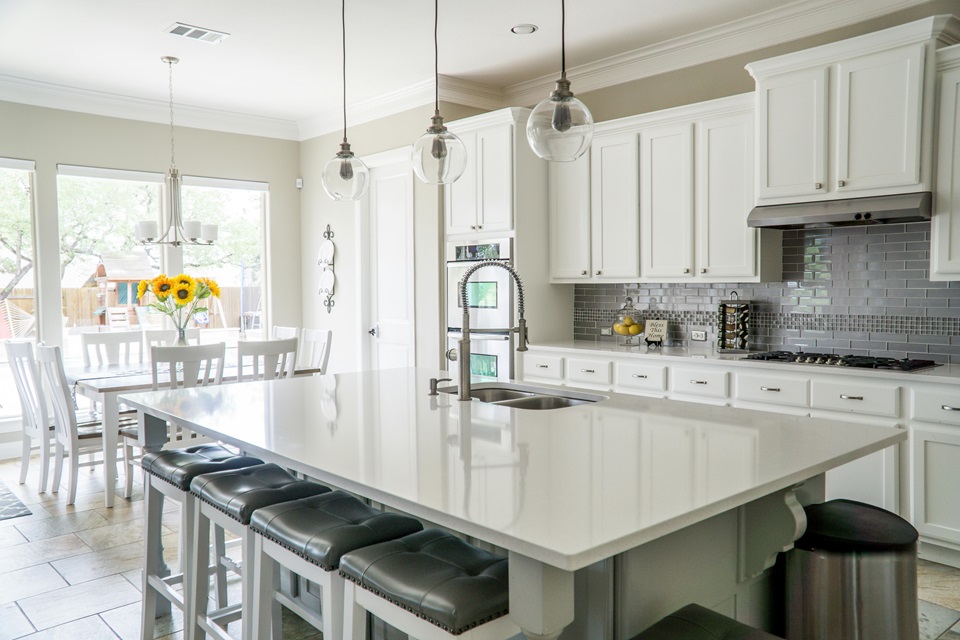Embarking on a house remodel can be an thrilling yet daunting journey. Regardless of whether you’re hoping to upgrade your kitchen, transform your basement into a cozy area for relaxation, or enhance your house's curb appeal, the key question remains: should you tackle the project as a DIY er or hire a professional? The choice you make can significantly impact both the results of your remodel and your wallet.
In this ultimate guide to organizing a house renovation, we will examine various elements of renovation to help you determine when it’s best to get hands-on and when to call in the professionals. From understanding the latest home renovation trends for 2024 to delving into budget and cost-saving tips, we aim to prepare you with the knowledge you require to successfully navigate your remodeling project, avoid common errors, and ultimately create a space that reflects your vision while adding worth to your house.
Self-Remodeling vs. Employing a Professional: Choosing Wisely
When it comes to home remodeling, one of the first decisions you'll face is whether to tackle the project yourself or hire a professional contractor. Do-it-yourself tasks can be a fulfilling method to save money and personalize your space, but they require a considerable of commitment, skill, and attention. If you have experience in home improvement and the necessary tools, you might find joy in designing your ideal area hands-on. However, be realistic about your abilities—some projects, especially those involving water systems or electricity, may be better left to the specialists.

On the other hand, contracting a professional can provide you with the peace of mind of expertise and high-quality results. Veteran professionals bring expertise of current building codes, necessary licensing, and industry standards that can save you frustration and headaches in the long run. Moreover, professionals often have access to greater materials and networks, which can result in better job delivery and potentially a quicker turnaround. For complex remodels or significant alterations, consulting with a professional can ensure that the work adheres to regulatory and functional needs.
Ultimately, the determination between doing it yourself and hiring a pro depends on your unique needs, financial limits, and personal willingness with home renovation tasks. For smaller updates or aesthetic enhancements, such as decorating or minor decor updates, DIY may be the best choice. For view it , more challenging projects—like a kitchen or bathroom overhaul—consider the advantages of working with a skilled contractor to achieve the best results and avoid expensive errors.
Financing Your Home Remodel
When preparing for a home renovation, financial planning is essential to ensure that your project stays viable and aligns with your financial capabilities. One of the first steps is to establish a realistic budget that takes into account not only the expenses of materials and labor but also unexpected expenses that often arise during remodeling. A good rule of thumb is to allocate an extra 10 to 20 percent of your total budget for unexpected costs. This extra cushion will assist you manage unexpected issues without disrupting your whole project.
To efficiently handle your budget, start by prioritizing your remodeling goals. Determine which areas of your house are the highest priority for an update and where you can attain the most significant return for your investment. For example, kitchen and bathroom renovations typically offer a higher return on investment compared to other areas. Additionally, think about researching the top home remodeling styles for 2024 to ensure your decisions are both modern and appealing, which can assist preserve or increase your home’s value.
Lastly, utilize cost-saving strategies as you proceed with your remodel. This could involve sourcing materials from affordable suppliers or undertaking some DIY tasks to cut down on labor costs. Remember to use resources that offer guidance on ways to remodel your home on a budget or how to finance your home remodel. Keeping a careful eye on your expenses and being adaptable with your approach will assist you stay on track financially while achieving the home of your dreams.
Ideas and Concepts for Contemporary Living Areas
Contemporary spaces are all about incorporating stylish yet practical designs that represent modern living. Spacious floor plans continue to lead, allowing for smooth transitions between sections and promoting a feeling of space. This design not only enhances ventilation and daylight, but it also encourages engagement among family and groups. When remodeling your home, consider taking down non-structural walls to create that expansive feel, which is especially in demand in living areas and kitchens.
Sustainability is another important trend defining contemporary home remodeling projects. Homeowners are increasingly choosing for sustainable materials and energy-efficient systems to minimize their environmental impact while enhancing their living environments. From photovoltaics to green insulation, these aspects provide substantial long-term savings and attractiveness to environmentally conscious buyers. Additionally, using repurposed wood or upcycled materials adds a distinct character to your home, merging aesthetic with sustainability.
Lastly, smart home technology is revolutionizing how we engage with our homes. Integrating intelligent devices, such as automated lighting, adaptive thermostats, and sophisticated security systems, not only boosts comfort but also elevates the overall value of your space. These innovations create a modern lifestyle that offers efficiency and comfort, ensuring that your update aligns with the technological advancements of today's world. Incorporating these themes will enhance the aesthetic and functionality of your space while preparing it for the years ahead.
